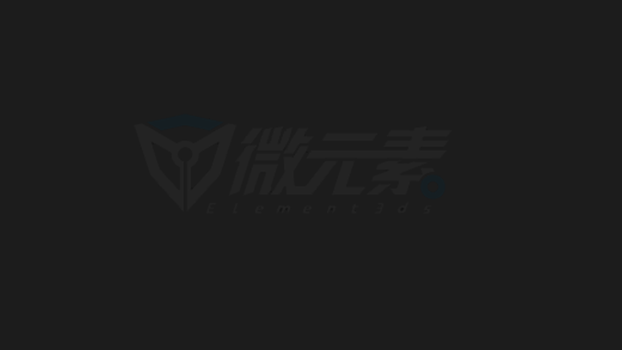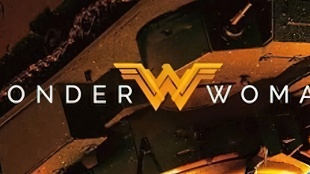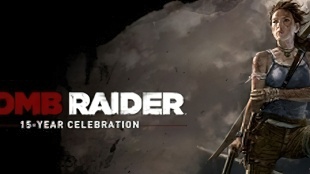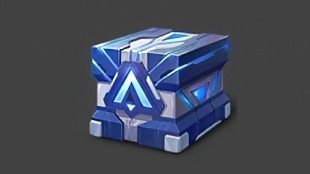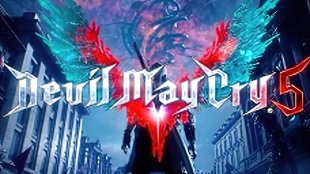您需要 登录 才可以下载或查看,没有账号?注册

x
本帖最后由 Ciel。 于 2021-12-31 16:49 编辑
Hangar – Environment Breakdown – Leonardo Betancur 2021 年 10 月 27 日
机库——环境分解——莱昂纳多·贝坦库尔
¡Hola Mundo! I’m Leonardo Betancur, I’m from Colombia (LATAM) and I’m a self-taught artist, currently
I’m studying mechanical engineering but I’m taking advantage of this pandemic to dedicate more time to my favourite hobby; 3D art. In this article I want to share with you a breakdown of an environment that I’m doing.
This hangar will be used in one scene of a short clip that I’m creating with a great Spanish artist and friend: Lobo. In that scene we’re gonna recreate a hangar to board meteorite mining vehicles. We were looking for something industrial and, at the same time, something with a massive scale, something big, really big. In this project, one of the main aims, a part of making the environment for the scene, was to improve my lighting, modeling and texturing skills, and take the challenge to create from scratch a giant space facility with the ability to board heavy-duty vehicles. This project was done using Blender for modeling, Substance Painter for texturing and Unreal Engine 4.26 for rendering.
¡Hola Mundo!我是 Leonardo Betancur,来自哥伦比亚(拉丁美洲),我是一名自学成才的艺术家,目前 我正在学习机械工程,但我正在利用这种流行病将更多时间用于我最喜欢的爱好;3D 艺术。在本文中,我想与您分享我正在做的环境的细分。 这个机库将用于我与一位伟大的西班牙艺术家和朋友 Lobo 共同创作的短片的一个场景中。在那个场景中,我们将重建一个机库来登上陨石采矿车。我们正在寻找一些工业化的东西,同时,一些具有大规模的东西,一些大的,非常大的东西。在这个项目中,主要目标之一,即为场景营造环境的一部分,是提高我的照明、建模和纹理技能,并接受挑战,从头开始创造一个能够登上重型太空设施的巨型太空设施——值班车辆。该项目使用 Blender 进行建模,使用 Substance Painter 进行纹理处理,使用 Unreal Engine 4.26 进行渲染。
Inspiration and References
I’m always amazed by the design of the scenarios in video games like Halo, Doom, and Star Citizen, the last was trascendental in the inspiration and design of this hangar. Recollect references and find the proper images to have an idea of what we are looking at was a challenge, because we are searching for something industrial, rough like a Minery station, but something with a sober and simple design like a futuristic space station (space odyssey style). My first thought was search inside Artstation to have an idea of where did I want to go with the lighting and assets design, and of course I recopilated a specific images to study:
我总是对 Halo、Doom 和 Star Citizen 等电子游戏中的场景设计感到惊讶,最后一个在这个机库的灵感和设计上是超然的。回忆参考资料并找到合适的图像来了解我们正在看的东西是一个挑战,因为我们正在寻找工业的东西,像采矿站一样粗糙,但像未来派空间站(空间奥德赛风格)。我的第一个想法是在 Artstation 中搜索,以了解我想要在哪里进行照明和资产设计,当然我重新复制了特定的图像以进行研究:
Blockout
In this stage the keyword is quick, I modeled inside blender a pile of modules in a faster way to start visualice the design that I want in the assets. With an idea of the scale and scheme, I started to create really quick props only using primitive meshes to capture faster my thoughts and the principal shapes that I wanted to achieve in the modules, always looking for a modularity function to have elements in the final design, to iterate the same props in different usages inside the hangar.
阻挡
在这个阶段,关键字是快速的,我在搅拌机内以更快的方式对一堆模块进行建模,以开始可视化我想要的资产设计。有了比例和方案的想法,我开始创建非常快速的道具,只使用原始网格来更快地捕捉我的想法和我想在模块中实现的主要形状,一直在寻找一个模块化功能来在最终获得元素设计,以在机库内以不同的用途迭代相同的道具。
The Rover (Vehicle made by Lobo) was an important piece to define the colors, style and scale of the hangar, was the first asset created for the short clip, with that vehicle I had a make sense of the scale of the modules for the hangar:
Rover(Lobo 制造的车辆)是定义机库颜色、风格和比例的重要部件,是为短片创建的第一个资产,有了那辆车,我对模块的比例有了了解机库:
Modelling and Unwrapping After completing the block out and defining the distribution, scale and main shapes, I started modeling each asset, in this phase the modifiers that blender allows me were very helpful to create the assets reusing the existing ones, deforming and iterating those with nondestructive modifiers to obtain different new assets. I tried to keep a low poly count in those assets to drive a good performance in blender and UE.
建模和展开 在完成块并定义分布、比例和主要形状后,我开始对每个资产进行建模,在这个阶段,blender 允许我使用的修改器非常有助于创建资产,重用现有资产,使用非破坏性修改器变形和迭代那些资产获得不同的新资产。我试图在这些资产中保持较低的多边形数量,以推动搅拌机和 UE 的良好性能。
The keyword here is reusable, from the first elements I built the rest, once I built a piece I looked for different variations of the same piece using modifiers, approaching the nondestructive modeling method.
这里的关键字是可重用的,从我构建的第一个元素开始,一旦我构建了一个作品,我就会使用修饰符寻找同一作品的不同变体,接近无损建模方法。
Using the A asset to create the B,C,D and E assets, etc.
For example; in the previous image you can see how I used asset A to generate the next four assets: using modifiers I created the assets B, C, D and E, in this case, I played with the mirror and array modifiers to obtain these structures. And also I used some mesh parts of the earlier props to create new ones.
Using mesh parts of some of the assets to create new props.
使用 A 资产创建 B、C、D 和 E 资产等。
例如; 在上图中,您可以看到我如何使用资产 A 生成接下来的四个资产:使用修改器创建了资产 B、C、D 和 E,在本例中,我使用镜像和阵列修改器来获得这些结构。而且我还使用了早期道具的一些网格部分来创建新的。
使用某些资产的网格部分来创建新道具。
Some interesting elements were made using the simple deform modifier, and curve modifier to capture a clean shape in a faster way.
一些有趣的元素是使用简单的变形修改器和曲线修改器制作的,以更快的方式捕捉干净的形状。
Nondestructive modeling to create new props.
The base meshes were made with a clean topology to avoid shading and topo issues with the modifiers, and to take the maximum advantage of this modeling method. I made the unwrap inside blender, at this stage I worried about keeping a high texel density in the larger pieces. For that task some of them have their only unique UV set, and the less relevant pieces share the UV space with other pieces.
无损建模以创建新道具。
基础网格采用干净的拓扑结构制作,以避免修改器出现阴影和地形问题,并最大限度地利用这种建模方法。我在搅拌机内展开了展开,在这个阶段我担心在较大的碎片中保持高纹素密度。对于该任务,其中一些具有唯一的独特 UV 集,而不太相关的部分与其他部分共享 UV 空间。 UV space distribution.
To obtain clean detailed results in the textures, I used the texel density addon to set a proper TD in the assets, I only use a 1 UV channel, because I realized a unique texture for each asset.
Below, Texel Density Checker Addon and Assets Texel Density overview.
UV空间分布。
为了在纹理中获得清晰的细节结果,我使用了纹素密度插件在资产中设置了适当的 TD,我只使用了 1 个 UV 通道,因为我为每个资产实现了独特的纹理。
下面是 Texel Density Checker Addon 和 Assets Texel Density 概述。
Gave everything a final UV check and the assets are ready to be imported in Substance Painter.
由于资源较多,我使用了blender自带的智能UV投影工具,轻松解开一些道具。通过一些更正,我获得了适当的 UV 以在 Substance Painter 中工作。
对所有内容进行最后的 UV 检查,资产已准备好在 Substance Painter 中导入。
Assets assembly
The assembly process of the pieces was made in parallel with the asset creations, but I always looked for a completely symmetrical and orderly placed array, which’s very common in industrial factories. I assembled the modules in the function of a pleasant ordered view.
资产组装
零件的组装过程与资产创建并行进行,但我一直在寻找一个完全对称且有序排列的阵列,这在工业工厂中很常见。我按照令人愉快的有序视图的功能组装了模块。
Once I had the UV’s ready to work, I started to manually create each texture set, because I was looking to design a unique industrial style, something sober but at the same time rough and I considered that this task couldn’t be done only using tileable textures.
The first stage was to configure Substance P. to match the default linear space color with the ACES space color appearance in UE, to this task I used a custom color LUT profile. I follow this tutorial of William Faucher, highly recommend it if you want to texture with a better idea of how you will see your assets in UE: .
After setting up Substance Painter I started texturing. The first step was to design the more attractive elements; patterns and details, all of that irrupt directly into the spectator. I used the NOVA – 17 Detail Alpha pack of Shawnell Priester and JRO free sample HS alpha pack to realise the Height details, I put all of this in a layer dedicated just for those height details.
Below, HS Height details layer.
一旦我准备好 UV 的工作,我开始手动创建每个纹理集,因为我希望设计一种独特的工业风格,一些清醒但同时粗糙的东西,我认为这个任务不能只使用可平铺的纹理。
第一阶段是配置 Substance P. 以将默认线性空间颜色与 UE 中的 ACES 空间颜色外观相匹配,为此我使用了自定义颜色 LUT 配置文件。我遵循 William Faucher 的这个教程,如果您想更好地了解如何在 UE 中看到您的资产,强烈推荐它: : .
设置 Substance Painter 后,我开始制作纹理。第一步是设计更具吸引力的元素;图案和细节,所有这些都直接进入观众。我使用了 NOVA – Shawnell Priester 的 17 Detail Alpha 包和 JRO 免费样品 HS alpha 包来实现高度细节,我将所有这些都放在一个专用于这些高度细节的图层中。
下面,HS 高度细节层。
Those details didn’t put randomly, I always kept in mind the 70-30 rule or Primary, Secondary And Tertiary Shapes principle, for more details of this, I recommend seeing the video column of ArtofSoulburn:
https://youtu.be/6IojuePYIHo
那些细节不是随便放的,我一直牢记70-30规则或Primary, Secondary and Tertiary Shapes原则,关于这方面的更多细节,我建议看ArtofSoulburn的视频专栏:https://youtu.be/6IojuePYIHo
Once I was satisfied with the details I started to create the base material for all of the assets, this is a smart material with the rough and damaging details generated procedurally. This material was specifically created to apply to all assets as a base paint layer, the complete layers, masks and other details used are in the following image:
一旦我对细节感到满意,我就开始为所有资产创建基础材料,这是一种智能材料,具有程序生成的粗糙和破坏性细节。这种材质是专门为作为基础油漆层应用于所有资产而创建的,完整的图层、蒙版和其他使用的细节如下图所示:
This smart material has three main groups of layers; one that controls the Rough, the other controls the metal wear details and the last one sets the base color. I only used two or three colors in each asset, to keep a good color harmony. The result of this main paint layer it’s the following:
这种智能材料具有三组主要层;一个控制粗糙,另一个控制金属磨损细节,最后一个设置基色。我只在每个资产中使用了两到三种颜色,以保持良好的色彩和谐。这个主要油漆层的结果如下:
Below, Base paint layer overview.
下面,基础油漆层概述。
When the base material was done, I started to add paint and color details like info decals, warning decals, etc. I added the wear and paint imperfections manually, erasing a little bit some parts in the paint, here it’s the group of layers of the paint details:
当基础材料完成后,我开始添加油漆和颜色细节,如信息贴花、警告贴花等。我手动添加了磨损和油漆缺陷,擦除了油漆中的一些部分,这是一组图层油漆细节:
Like you realize, those layers are very simple, but the colors were carefully selected to match with the high contrast orange that covers 90% of the colors, the result is this:
就像你意识到的那样,这些图层非常简单,但颜色经过精心挑选,以匹配覆盖 90% 颜色的高对比度橙色,结果是这样的:
Below, paint details layers overview.
下面,绘制细节层概述。
And in the final pass I put a last rough manual imperfection details and the emissive lights:
在最后一遍中,我添加了最后一个粗略的手动缺陷细节和自发光: The final layer setup with its complete paint layers looks like this, below.
The same process I followed in all assets.
带有完整油漆层的最终层设置如下所示。
我在所有资产中都遵循相同的过程。 Lighting
Without a proper understanding of how to drive the light functionality, it’s possible to lose a bunch of details and stuff that you want to show, that’s the reason for the keyword of this section; “Functional”. I used two groups of light; the functional lights; that’s the basic lights that the assets have like lamps and the detail lights, their function is to show extra shapes and details. In this case, the hangar has a bunch of lights for two reasons: 1. In an industrial factory, it’s common to see too many lights to illuminate properly the job positions and 2. Because I was looking to condense the maximum quantity of details per frame.
灯光
如果没有正确理解如何驱动灯光功能,很可能会丢失一堆你想要展示的细节和东西,这就是本节关键词的原因;“功能性”。我用了两组光;功能灯;这就是资产具有的基本灯光,例如灯和细节灯,它们的功能是显示额外的形状和细节。 在这种情况下,机库有一堆灯有两个原因:1. 在工业工厂中,经常会看到太多的灯无法正确照亮工作位置;2. 因为我希望将每个细节的最大数量浓缩框架。
Below are some examples of functional and detailed lights.
下面是一些功能性和详细的灯光示例。
Before to past the assets inside Unreal Engine, I resolved to experiment with lighting inside Blender, using the EEVEE render engine. I initiated to set up the lighting where I need to show detail, and where the lights are supposed to be to illuminate the job positions or the light that companies some of the assets lamps, module lights and vehicles. I used the volume scatter shader to obtain the atmospheric mood and the volumetric lights in the shoots. I always look for a Cold mood that it’s very common in sci-fi films. In this first lighting probe, I used point lights to show details and rect lights for the lamp lights.
在通过虚幻引擎中的资产之前,我决定使用 EEVEE 渲染引擎在 Blender 中试验照明。我开始在我需要显示细节的地方设置照明,灯应该在哪里照亮工作位置或公司一些资产灯,模块灯和车辆的灯。 我使用体积散射着色器来获得拍摄中的大气情绪和体积光。我一直在寻找一种冷酷的情绪,这在科幻电影中很常见。在第一个光照探针中,我使用点光源来显示细节,并使用矩形光源作为灯的光源。
Below are examples of Blender, render and world settings.
以下是 Blender、渲染和世界设置的示例。 As you see, the points lights were accommodated to show interesting forms and shapes, and they were the main ones responsible to expose the cold mood.
如你所见,点光源被用来展示有趣的形式和形状,它们是主要负责暴露冷酷情绪的。 With this “Sketch light” all was ready to pass into the Unreal engine.
有了这个“Sketch light”,一切就可以进入虚幻引擎了。
Material setup in Unreal Engine
The master material it’s simple because I made all the textures inside SP, and each asset has a unique texture. This counts with exposed parameters to replace the texture sets according to the corresponding asset, and has the options to accommodate the rough, normal and emissive strength, also allows the possibility of turning on or off the lights that I incorporated in some props.
Below is an example of the master material with exposed parameters and instanced material example. Also, the first module looks inside UE.
虚幻引擎中的材质设置
主材质很简单,因为我在 SP 中制作了所有纹理,并且每个资产都有一个独特的纹理。这算上暴露的参数,以根据相应的资产替换纹理集,并且可以选择适应粗糙、正常和发射强度,还允许打开或关闭我在某些道具中加入的灯光。
下面是带有公开参数和实例化材质示例的主材质示例。 此外,第一个模块查看 UE 内部。 Lighting: Part 2
With an idea of the light that I want to achieve, I started setting up the lighting from scratch, for performance reasons and hardware limitations, I only used dynamic lights, to complement and improve the quality of the indirect lighting I used the SSGI (Global Illumination) feature and the mesh distance fields to obtain a better AO and shadowing results.
The first step was enclosing the module in a cube to start with a proper interior lighting process, also this helps to don’t disrupt the lights and image with the background generated for the exponential height fog used to the volumetric lighting.
照明:第 2 部分
有了我想要实现的灯光的想法,我从头开始设置灯光,出于性能原因和硬件限制,我只使用动态灯光,以补充和提高我使用 SSGI (Global Illumination) 特征和网格距离场以获得更好的 AO 和阴影效果。
第一步是将模块封闭在一个立方体中,以开始适当的内部照明过程,这也有助于不破坏灯光和图像,背景是用于体积照明的指数高度雾生成的背景。 Like I said before (Lighting part I) I made two group lights: the functional lights and the detail lights, the functional light group was the first place, then I put the detail light group. The setup of these lights it’s simple, I used only spot and rect lights with a huge radius distance, to generate soft shadows, to achieve a cold mood some of the functional lights have a soft blue color.
就像我之前说的(Lighting part I)我做了两个组灯:功能灯和细节灯,功能灯组放在第一位,然后我放细节灯组。这些灯的设置很简单,我只使用了半径距离很大的聚光灯和矩形灯,以产生柔和的阴影,以实现冷色调,一些功能灯具有柔和的蓝色。
Below, an example of the complete lighting setup (Detail lighting).
下面是完整照明设置的示例(细节照明)。
在某些灯光中,我禁用了投射阴影,这样做的唯一目的是在某些道具中显示额外的细节或强调我想要曝光的区域。
Below is an example of Cast shadows ON and OFF.
下面是投射阴影 ON 和 OFF 的示例。
Once I placed all my light setup, as I mentioned before, I added an exponential height fog to add volumetric lighting and scatter distribution in the lights, the config in the EHF parameters are shown in the following image:
正如我之前提到的,一旦我放置了所有的灯光设置,我添加了一个指数高度雾来添加体积照明和灯光中的散射分布,EHF 参数中的配置如下图所示:
I used the global illumination (SSGI) feature of UE 4.26 to improve the lighting quality increasing the indirect lighting influence. You can enable it from the project settings or using the console command, I set up some parameters in the cmd console to obtain a better look.
我使用 UE 4.26 的全局照明 (SSGI) 功能来提高照明质量,从而增加间接照明的影响。您可以从项目设置或使用控制台命令启用它,我在 cmd 控制台中设置了一些参数以获得更好的外观。
To obtain more information about the impact and implementation of SSGI inside UE you can check it outthe official documentation:
https://docs.unrealengine.com/4. ... GlobalIllumination/
要获取有关 UE 内 SSGI 的影响和实现的更多信息,您可以查看官方文档:
https://docs.unrealengine.com/4. ... GlobalIllumination/
To increment the indirect light influence in some areas I used an importance light volume.
为了增加某些区域的间接光影响,我使用了一个重要的光体积。
Post-Processing
In this part the keyword it’s “cold”, I was looking to obtain a deep image but at the same time something bluish to express a better feeling of sci-fi. In many films, it’s very common to see a cold image on the screen so I decided to play with the post-process volume to obtain the result that I was looking for. For this task I used a color LUT profile called Modern dystopian, I obtain that color profile from the amplify LUT pack on the UE marketplace, for more info check:
https://www.unrealengine.com/mar ... ct/amplify-lut-pack
后期处理
在这部分关键词是“冷”,我希望获得一个深刻的形象,但同时又是蓝色的,以表达更好的科幻感。在很多电影中,在屏幕上看到冷图像是很常见的,所以我决定使用后期处理量来获得我想要的结果。对于这个任务,我使用了一个叫做现代反乌托邦的颜色 LUT 配置文件,我从 UE 市场上的放大 LUT 包中获取该颜色配置文件,有关更多信息,请查看:https://www.unrealengine.com/mar ... ct/amplify-lut-pack
Below are examples of the Color LUT Config and sat/contrast config.
以下是颜色 LUT 配置和 sat/contrast 配置的示例。
To complement this color editing I play around with the saturation and contrast values to obtain a more intense cold image:
为了补充这种颜色编辑,我使用饱和度和对比度值来获得更强烈的冷图像:
The cool horizontal lens can be generated using the bloom convolution method with a custom convolution kernel, in this case, I made a horizontal flare in Photoshop, and this is what I used as the convolution kernel. To control the intensity of the flares, you can play around with the advanced bloom settings. It was complemented with the default lens that the post-process volume offered. Here are the bloom config settings.
可以使用带有自定义卷积核的bloom卷积方法生成很酷的水平镜头,在这种情况下,我在Photoshop中制作了一个水平光晕,这就是我用作卷积核的内容。要控制耀斑的强度,您可以使用高级泛光设置。它与后期处理量提供的默认镜头相辅相成。这是bloom配置设置。
Below are images of the Custom and default convolution kernel differences.
下面是自定义和默认卷积核差异的图像。
清晰的结局图像是使用后期处理材料获得的,我按照 Ervin Jesse 的后期处理锐化教程创建了此材料,请在此处查看他的精彩教程: https://youtu.be/9EDVPcQsyzs
Below are images of the scene with applied sharpen post-process material enabled and disabled. 下面是启用和禁用应用锐化后处理材料的场景图像。 The sharp image was complemented with some exposure corrections and added a low chromatic aberration intensity to the image.
清晰的图像补充了一些曝光校正,并为图像添加了低色差强度。
Decorative Decals
To dress the scene a little bit, I used some decorative decals (oil droplets and puddles) to try to capture a more industrial feeling. The materials were created following some of the Ben Cloward tutorials complemented with the M16 – Harvester Environment Design tutorial of Shawnell Priester. The image below is with decals added.
装饰贴花
为了稍微修饰场景,我使用了一些装饰贴花(油滴和水坑)来尝试捕捉更工业化的感觉。这些材料是根据 Ben Cloward 的一些教程创建的,并辅以 Shawnell Priester 的 M16 – Harvester Environment Design 教程。下图是添加了贴花。
The shaders are actually quite easy and highly inspired by the functionality that Shawnell P. exposed in his breakdown tutorial. 着色器实际上非常简单,并且受到 Shawnell P. 在他的细分教程中公开的功能的高度启发。
Below are the materials of the decals puddle and droplet water. 下面是贴花水坑和水滴的材料。
With the decals placed, I used some spheres reflections capture to intensify the influence in the puddles and in the rough variations of the assets. 放置贴花后,我使用了一些球体反射捕获来加强水坑和资产粗略变化的影响。 The reflections are not ray-traced and don’t generate a proper mirroring, but they work enough to create an illusion of a highly illuminated place because those reflections generate more information of light that helps to build the idea of a hangar that I want to show. In the final polishing, I added some VFX effects like steam and particles ( that came with the starter content), just to complement the scene, the steam was added like the vapor that the pipes emit in the industrial places, this helps a lot in the hangar to make more credible the idea to situate the viewer in an industrial place.
反射不是光线追踪的,也不会产生适当的镜像,但它们足以创造一个高度照明的地方的错觉,因为这些反射会产生更多的光信息,这有助于建立我想要的机库的想法展示。 在最后的打磨中,我添加了一些 VFX 效果,如蒸汽和粒子(随入门内容一起提供),只是为了补充场景,添加了蒸汽,就像工业场所管道散发的蒸汽一样,这对我有很大帮助机库使将观众置于工业场所的想法更加可信。
Final thoughts
The hard part was to make a proper visual design that allows the spectator to stay astonished with the scale of what he is seeing, but at the same time don’t lose him with a bunch of noisy details, always it’s important to have clear the fundamentals of design. I considered that the hangar achieved a proper and credible industrial mood, but of course, this project is still in development, the set dressing part must be polished, adding more props and different vehicle variations. In my Artstation post, you can see other different lighting combinations and experiments with some shots that I made, feel free to check it out.
最后的想法
困难的部分是进行适当的视觉设计,让观众对他所看到的东西的规模感到惊讶,但同时不要因为一堆嘈杂的细节而失去他,始终重要的是要清楚设计的基础。我认为机库实现了适当而可信的工业氛围,但当然,这个项目仍在开发中,布景部分必须打磨,添加更多道具和不同的车辆变化。在我的 Artstation 帖子中,您可以看到其他 不同的照明组合和我拍摄的一些镜头的实验,请随时查看。
Dear reader, thanks for taking your time reading this article, I hope that has been to your liking. This is a work in progress like I mentioned before but the rest of the assets will be created with the same principles and workflow exposed here, maybe I forgot some details or maybe I explained some topics in a very general way, but feel free to write me in Artstation, or email me ( betaleonardo2017@gmail.com) if you want to know more about this specific project, and of course, if you have any constructive feedback to me. 亲爱的读者,感谢您花时间阅读本文,希望您喜欢。就像我之前提到的,这是一项正在进行的工作,但其余的资产将使用此处公开的相同原则和工作流程创建,也许我忘记了一些细节,或者我以非常笼统的方式解释了一些主题,但请随时写如果你想了解更多关于这个特定项目的信息,当然,如果你对我有任何建设性的反馈,我在 Artstation,或者给我发电子邮件( betaleonardo2017@gmail.com)。 Special thanks to GamesArtist UK to guide me in this interview and of course for giving me the opportunity to share with you this breakdown, also many thanks to my partner Lobo (Check out his awesome work: https://www.artstation.com/lobo3dworld for providing me with the awesome Rover vehicle that you saw in the scene. Want to know more about this specific project, and of course if you have any constructive feedback for me.
|











